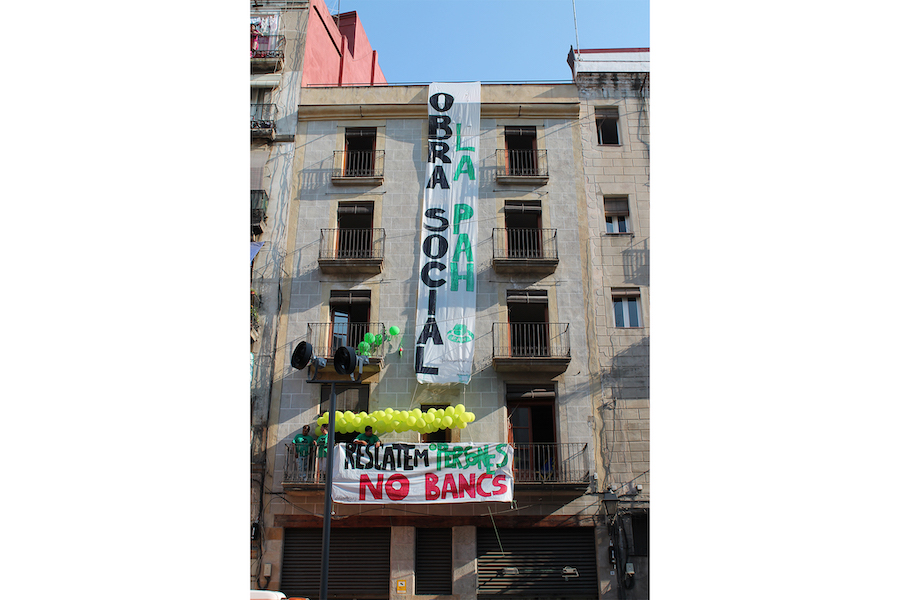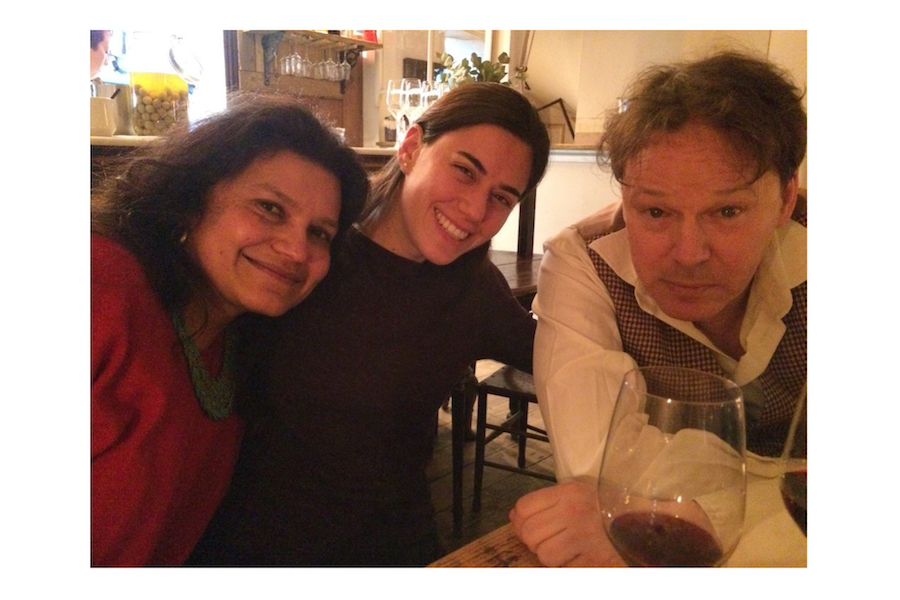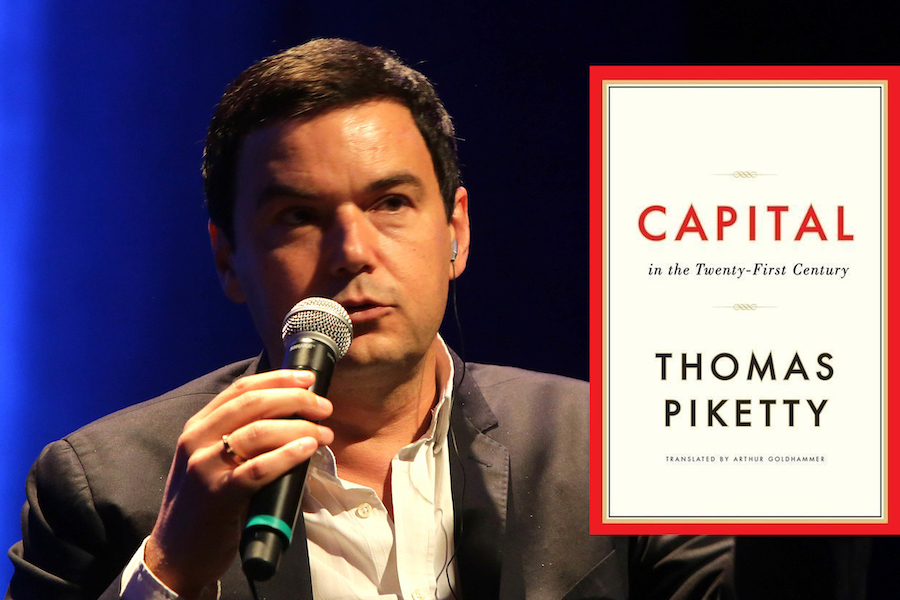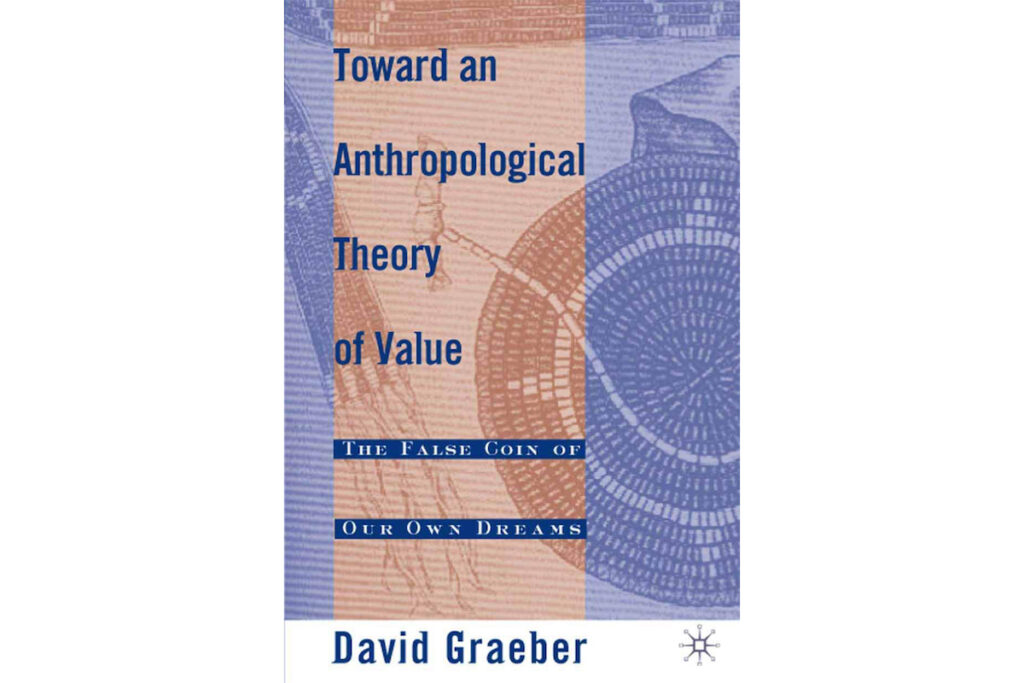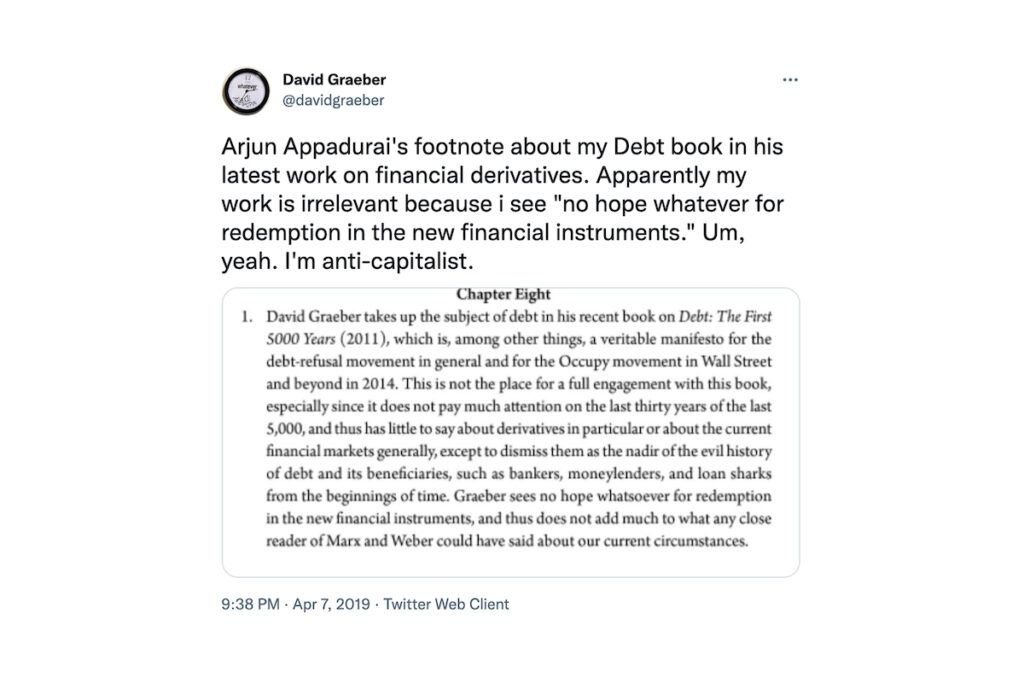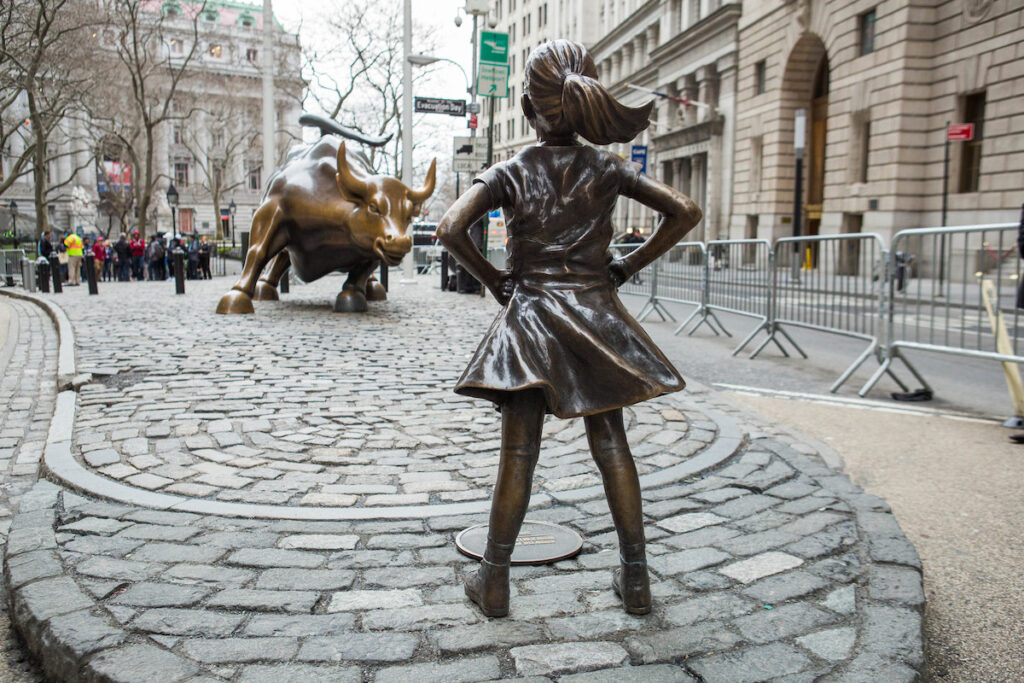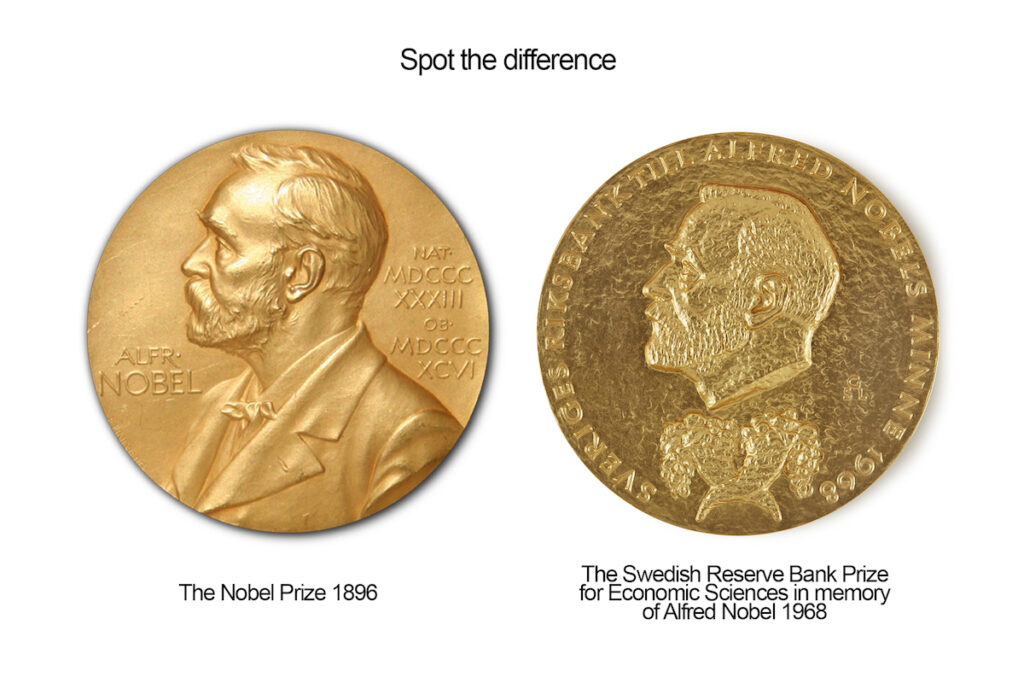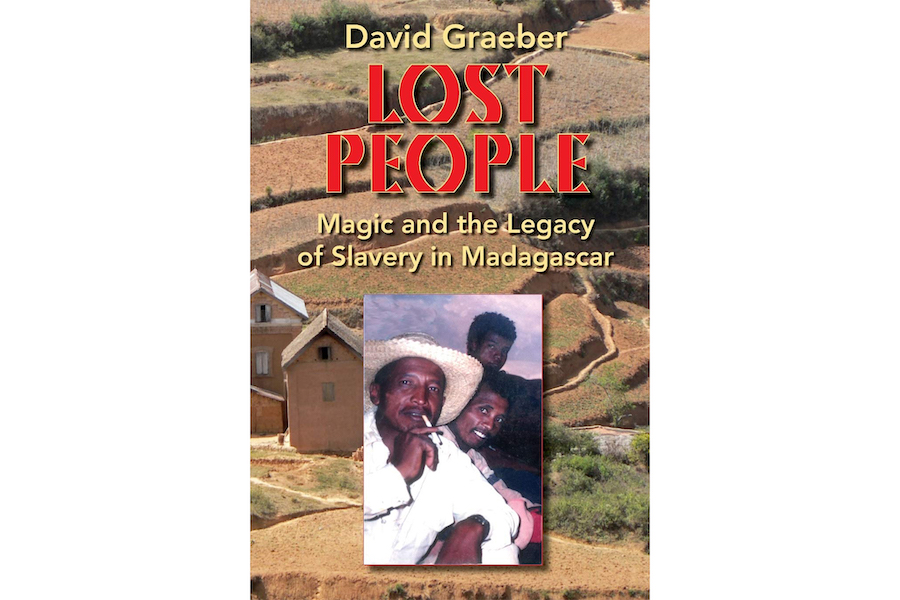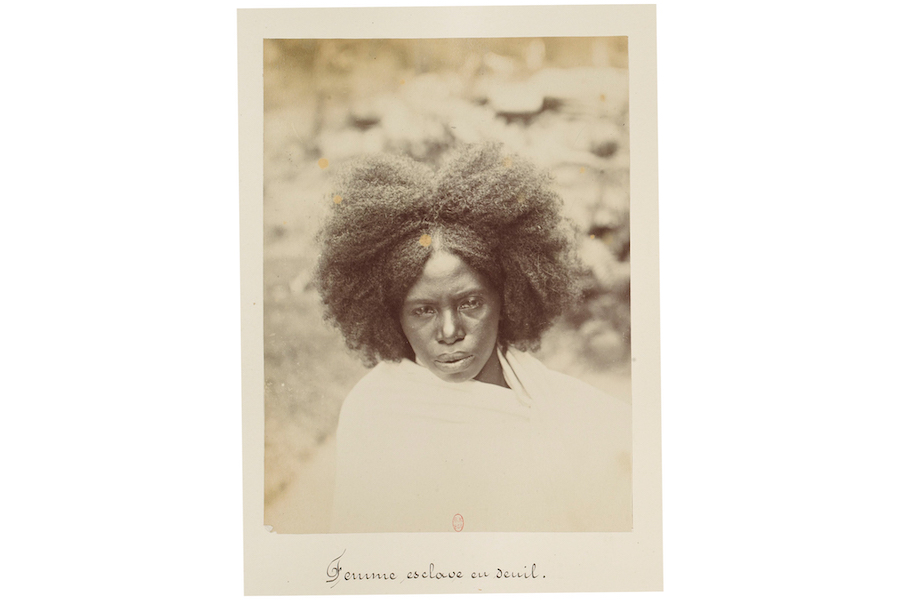A review article on The Dawn of Everything: A New History of Humanity, by David Graeber and David Wengrow. Allen Lane, 2021.
The Dawn of Everything’s central idea is challenging. We are told that humans are politically adventurous and experimental – so much so that after a spell of freedom and equality, people are inclined to choose oppression just to make a change. History takes a rhythmic form, oscillating between one extreme and the next. In recent times, however, we’ve all got stuck in just one system and we must try to understand why.
All this is new and refreshing but hardly credible. I prefer the standard anthropological view that the political instincts and social emotions that define our humanity were shaped under conditions of egalitarianism. To this day, all of us feel most relaxed and happy when able to laugh, play and socialize among companions who are our equals. But instead of building on this experience so familiar to us all, Graeber and Wengrow (henceforth: ‘G&W’) oppose the whole idea that our hunter-gatherer ancestors were egalitarians. In their view, they would just as likely have chosen to be oppressed.
As they put it: ‘If the very essence of our humanity consists of the fact that we are self-conscious political actors, and therefore capable of embracing a wide range of social arrangements, would that not mean human beings should actually have explored a wide range of social arrangements over the greater part of our history?’ Among these possibilities, as the authors readily acknowledge (pp. 86-7), were abusive dominance hierarchies like those of chimpanzees. G&W seem to be arguing that if our ancestors were so adventurous, then surely, they would have experimented not only with egalitarianism but also with harassment, abuse and domination by aggressive, bullying males.

G&W make these points in the context of a consistent attack on any idea that we became socially and morally human during the course of a revolution. All my academic life, I have been exploring the idea that human language, consciousness, kinship and morality evolved in a process of gradual evolution which culminated in an immense social and political revolution. My motivation was always to challenge the popular prejudice that socialism is impossible because by nature we humans are selfish and competitive – and ‘not even a revolution could change human nature’.
I would always answer this way. Yes, we are a species of great ape. Yes, like our primate cousins, we have competitive, selfish, aggressive and often violent instincts. But these were not the ones responsible for our success. Everything distinctively human about our nature – our capacity to be brilliant mums and dads, to care for one another’s children and not just our own, to establish moral rules, to see ourselves as others see us and to use music, dance and language to share our dreams – these extraordinary capacities were precisely the products of the greatest revolution in history, the one that worked.
Chris Boehm’s theory of the human revolution
Nearly a decade after the appearance of my own book detailing the complexities of this ‘human revolution’ (Knight 1991), the anthropologist Christopher Boehm (1999) published a version of the theory that, despite its insights, played safe in political terms by omitting any mention of the most important element – the dynamics of sex and gender. It is this abstract, unisex version of human revolution theory that G&W consider safe enough to mention explicitly in order to discredit it.
Boehm points out that our earliest ancestors were neither one-sidedly cooperative nor one-sidedly competitive. Instead, they were psychologically disposed to dominate others while forming alliances to resist being dominated in turn. This collective resistance from below eventually culminated in everyone coming together to prevent any would-be leader from dominating the group. Our ancestors’ chimpanzee-style dominance was now turned on its head, culminating in ‘reverse dominance’ – rule by a morally aware community committed to an egalitarian ethos.
G&W go along with the idea that humans ‘do appear to have begun … with a self-conscious aversion to being told what to do’ (p. 133). In this context, they agree that extant hunter-gatherers display ‘a whole panoply of tactics collectively employed to bring would-be braggarts and bullies down to earth – ridicule, shame, shunning …. none of which have any parallel among other primates’ (p. 86). What they’ve no interest in is the idea that such tactics played a crucial role in shaping human nature during our evolutionary past.
Summing up their objection to Boehm’s account, they describe any suggestion that hunter-gatherers consistently preferred egalitarianism as an ‘odd insistence’ that ‘for many tens of thousands of years, nothing happened’. If our hunter-gatherer ancestors were consistently egalitarian, their political lives must have somehow been frozen, stuck in time. G&W conclude with these words: ‘Before about 12,000 years ago, Boehm insists, humans were basically egalitarian . . . according to Boehm, for about 200,000 years [these] political animals all chose to live just one way.’ (p. 87)
The only problem is that this isn’t what Boehm wrote. His actual words are worth quoting:
‘Once one band, somewhere, invented an egalitarian order, this radical change in social ways of doing things would become visible to its neighbors. The advantages would have been evident wherever subordinates were ambivalent about being dominated, particularly in bands with very aggressive bullies…. One would expect a gradual cultural diffusion to take place, with attractive egalitarian traditions replacing despotic ones locally. … Over time, migration patterns over longer distances could have fairly rapidly spread this political invention from one continent to another.’ (Boehm 1999: 195)
This is how successful revolutions work. Plainly,
Boehm’s argument was not simply that until 12,000 years ago ‘humans were
basically egalitarian.’ Instead, he suggests that early humans developed a
variety of different political systems while gradually converging around one
particularly successful model – egalitarianism.
The Teatime of Everything
Quite unfairly, The Dawn of Everything conflates modern evolutionary theory with social evolutionism – the nineteenth century narrative of a ladder of stages progressing from ‘savagery’ through ‘barbarism’ to ‘civilization’. Darwinism claims to be scientific, we are told, but in reality, is pure myth. Quixotically, G&W expect readers to give serious consideration to a perspective on human origins that does not acknowledge evolutionary theory at all.
The only science these authors do recognize is ‘archaeological science’, and then only if the archaeology doesn’t go too far back. They justify dating ‘the dawn of everything’ to a mere 30,000 years ago on the basis that nothing about politics or social life can be gleaned from archaic human ‘cranial remains and the occasional piece of knapped flint’(p. 81).
This excuse no longer works in the light of recent evidence that our species’ most unique trait – art and symbolic culture – emerged in Africa three or four times earlier than was previously thought. By no means limited to bones and stones, this evidence consists of beads, geometric engravings, burials with grave goods and artefacts such as grindstones and paint pots, all invariably found in association with red ochre (Henshilwood et al. 2009, 2011). G&W do notice one or two of these discoveries (pp. 83-4) but show little interest – despite the fact that when cutting-edge Darwinian theory is applied to the ochre record, the possibilities for generating predictions about social dynamics, patterns of ritual performance and gendered alliances become very real (Power 2009, 2019; Power et al. 2013; Power et al. 2021; Watts 2014).
Unfortunately, these authors won’t go near Darwinism in any shape or form. They concede that someone whom they term a ‘feminist’ (actually the highly respected founding figure in primate and human sociobiology Sarah Hrdy) has come up with a ‘story’ about the critical role of collective childcare in shaping our human instincts and psychology (Hrdy 2009). Commenting that ‘there’s nothing wrong with myths’, they describe this particular myth as ‘important.’ They then immediately cast doubt on it by quipping that ‘such insights can only ever be partial because there was no garden of Eden, and a single Eve never existed’ (p. 82). Tricks of this kind – in this case ignoring the fact that Hrdy’s groundbreaking work is focused on the emergence of the genus Homo some 2 million years before the dating of our common mitochondrial DNA ancestor – are clearly aimed at undermining the very idea that human origins research is worth pursuing at all.
Readers interested in Mesolithic and Neolithic archaeology will find plenty of intriguing speculations in this book. But if you are interested in how we became human – how we developed our unusually revealing eyes, our extraordinarily large brains, our distinctively social emotions, our laughter, our innate capacity for music and language – you won’t find anything at all!
The title is seriously misleading. The Dawn of Everything? ‘Teatime’ would be more accurate. The story begins with the European Upper Paleolithic, best known for those spectacular cave paintings in Ice Age France and Spain. According to the authors, by that stage the archaeology is at last getting interesting because it indicates the emergence of an economic surplus allowing elites to arise. For the first time, we begin to see evidence for social complexity, hierarchy, sumptuous burials etc.
‘Tiny hunter-gatherer bands’
For G&W, the fact that our hunter-gatherer ancestors established an egalitarian lifestyle much earlier in Africa is of limited interest. They concede that extant hunter-gatherers such as the Hadza of Tanzania share their resources, but instead of admiring this, they complain that resistance to accumulation obstructs the emergence of ‘social complexity’, using this term where others might have spoken of ‘class’. The authors, it seems, are averse to the concept of social class.
So, hunter-gatherers obstruct complexity – i.e., prevent class society from arising – by resisting the accumulation of wealth. G&W invoke the authority of the hunter-gatherer specialist James Woodburn here. They conclude from his work that ‘the only way to maintain a truly egalitarian society is to eliminate the possibility of accumulating any sort of surplus at all’ (p. 128). This, they argue, rules out social complexity and – with it – the full richness of human cultural and intellectual life.
Woodburn (1982, 2005) certainly did argue that deliberate resistance to accumulation underpins hunter-gatherer egalitarianism and represents a political choice consciously made. He observed that such egalitarianism was a feature only of non-storage hunter-gatherers, concluding that ‘immediate return’ was the original type of human economy. But Woodburn did not argue that such egalitarianism was lacking in complexity. In fact, he viewed the binary contrast between ‘simple’ and ‘complex’ social forms as damaging and misleading. For Woodburn, maintaining egalitarianism was a supremely sophisticated achievement – demanding far greater levels of political intelligence and complexity than simply allowing inequalities to arise. The Hadza, he explained, have the intelligence to realize how dangerous it would be to let anyone accumulate more wealth than they need.
Wealth inequalities not OK
According to G&W, however, wealth inequalities are unproblematic. In support of their position, they invoke Kandiaronk, the seventeenth century First American critic of European ‘civilization’ to whom they devote an inspiring chapter. Somewhat unconvincingly, they assure us that Kandiaronk and his First American co-thinkers ‘had trouble even imagining that differences of wealth could be translated into systematic inequalities of power’ (p. 130).
G&W accept that immediate-return hunter-gatherers refuse to allow wealth inequalities to develop. But surprisingly, they regard this whole situation as disappointing:
‘This might sound like the basis of something hopeful or optimistic. Actually, it’s anything but. What it suggests is, again, that any equality worth the name is essentially impossible for all but the very simplest foragers. What kind of future might we then have in store?’ (p. 129)
What kind of future? They answer this by suggesting that activists who take inspiration from African hunter-gatherers are inviting modern city-dwellers to become ‘stuck,’ like the unfortunate Hadza, in the repetitive simplicity of life in tiny nomadic bands.
To be clear, I am no primitivist. I am in favor of technological, social and political development. The Hadza illustrate that it is fulfilling and enjoyable to share wealth on demand, to laugh and sing, to ‘waste time’ in play, to resist letting anyone dominate us – and to prioritize caring for each other’s children over all other concerns. When it comes to development, these politically sophisticated bow-and-arrow hunters can teach us a lot.
In the beginning … private property?
G&W argue that private property is primordial because it’s inseparable from religion. By way of illustration, they refer to the trumpets and other paraphernalia used in some indigenous traditions during boys’ coming-of-age ceremonies:
‘Now, these sacred items are, in many cases, the only important and exclusive forms of property that exist… It’s not just relations of command that are strictly confined to sacred contexts…, so too is absolute – or what we would today refer to as ‘private’ – property. In such societies, there turns out to be a profound formal similarity between the notion of private property and the notion of the sacred. Both are, essentially, structures of exclusion.’ (p. 159)
Note how ‘absolute’ here gets translated as ‘private.’ The claim seems to be that if ritual property is sacred to an ‘absolute’ degree, then it qualifies by definition as ‘private property’.
The conflation is reinforced when the authors seek authority for their association of religion with private property. At this point G&W (p. 159) invoke Émile Durkheim’s classic definition of ‘the sacred’ as that which is ‘set apart’:
‘Durkheim argued that the clearest expression of the sacred was the Polynesian term tabu, meaning “not to be touched”. But when we speak of absolute, private property, are we not talking about something very similar – almost identical in fact, in its underlying logic and social effects?’
The authors then describe how ethnographers working with indigenous Amazonians discovered ‘that almost everything around them has an owner, or could potentially be owned, from lakes and mountains to cultivars, liana groves and animals.’ (p. 161) A spiritual entity’s sacred ownership of a species or resource sets it apart from the rest of the world. Similar reasoning, write G&W, underpins Western conceptions of private property. ‘If you own a car’, they explain, ‘you have the right to prevent anyone in the entire world from entering or using it’ (p. 159).
It is quite breath-taking to find G&W conflating traditional notions of spiritual ‘ownership’ with ideas about owning your own car. On what planet are they when they view modern private ownership as ‘almost identical’ in its ‘underlying logic and social effects’ with a supernatural being’s ‘ownership’ of natural resources?
When indigenous activists tell us that a lake or mountain is sacred to a powerful spirit, they are not endorsing anything remotely equivalent to ‘private property’. If the ‘Great Spirit’ owns the forest, the clear implication is that it is not for sale, not to be privatized, not to be claimed by a logging company.
One of the most powerful of Durkheim’s insights was that when people invoke Divinity, they are envisaging the moral force of their community as a whole. So, if a mountain belongs to God, that’s a way of declaring that it cannot be privatized. When G&W turn that round – claiming that the concept of ‘private property’ emerged inseparably from the very idea that some things are sacred – you can see what a crude misrepresentation this is.
What Durkheim really said
For Durkheim (1963, 1965), ‘setting apart’ was the antithesis of private appropriation. In his quest to explain the origin of the world-wide cultural taboo against incest, he puzzled over traditional beliefs investing women ‘with an isolating power of some sort, a power which holds the masculine population at a distance…’ (1965: 72). In such belief systems, Durkheim wrote, women’s segregating power is that of their blood, bound up intimately with notions of the sacred. If divinity becomes visible in women when they bleed, it is because their blood itself is divine. ‘When it runs out, the god is spilling over’ (Durkheim 1965: 89).
For Durkheim, then, the primordial concept of ‘setting apart’ had nothing to do with private property. The issue was what happened to a young woman on coming of age (1965: 68-96). Alerted by her menstrual onset, her kin would assemble as a body to lay claim to her – that is, to ‘initiate’ her – setting her apart from male company and from the world. Her seclusion was accomplished through a special ritual – her coming-of-age ceremony. This established that her body was sacred, her choices with respect to it accountable to her sisters and other kin. In association with such collective action, the emergence of human consciousness, language and culture, for Durkheim, was the point at which a new kind of authority – that of the community – first came into being.
If only G&W had shown an interest in modern evolutionary science, they would have recognized how these Durkheimian insights anticipated the most recent and authoritative modern archaeological explanation for the ochre record in human evolution, based on the idea that blood-red ochre was used by women as cosmetic ‘war-paint’ to alert men to the newly-established sacredness of the female body (Watts 2014, Power 2019, Power et al., 2021).
Seasonal or lunar?
Now we come to The Dawn of Everything’s central idea. It is that we were all once free because we could choose how to live, experimenting now with one political structure and now another – sometimes even oscillating between utterly different social states.
Anyone who has studied anthropology will have come across the Eskimo seal-hunters who traditionally practiced sexual communism throughout the winter months, only to switch over to patriarchal family life throughout the summer – returning suddenly to communism on a particular day announced publicly as the onset of winter. G&W apply this pendulum or oscillation model to the Ice Age cultures of the European Upper Paleolithic, arguing that these complex hunter-gatherers deliberately set up vertical hierarchies of elite privilege and power – only to enjoy the pleasure of tearing them all down as the old season gave way to the new.
Because they enjoyed this revolution so much, these Ice Age political geniuses realized that they shouldn’t hold on permanently to their revolutionary gains. They understood that in order to keep enjoying successive revolutions, they would have to fill the intervals with transient counter-revolutions – doing this by allowing ‘special’ individuals to establish dominance so as to present a nice target for the next revolutionary upsurge.
I love this idea. As it happens, it uncannily resembles the oscillatory principle that we in the Radical Anthropology Group have analysed as the inner secret of hunter-gatherer egalitarianism ever since Blood Relations was published three decades ago (Knight 1991). On the other hand, my oscillation model was not quite the same. Because we evolved not in sub-Arctic conditions but in Africa, there were good ecological reasons why monthly periodicities should take precedence over seasonal rhythms. So, if power was seized and surrendered in the way G&W imagine, then social life would have been turned upside-down on a monthly schedule, oscillating with the waxing and waning moon (Knight 1991: 327-373).
A pendulum of power
G&W’s history is bursting with oppositions and alternations among hunter-gatherers but its periodicities are one-sidedly seasonal. Don’t they know that hunter-gatherers follow not just the sun but the moon? Their most important rituals, bound up as these are with women’s menstrual ebbs and flows, are scheduled by the moon.
In the rainforests of the Congo, writes Morna Finnegan (2008, 2009, 2012), women deliberately encourage men to display their courage and potential for dominance – only to defy them in an all-female ritual known as Ngoku before yielding playfully in a ‘pendulum of power’ between the sexes. G&W (pp. 114-15) allude to this but then claim that:
‘… there is no single pattern. The only consistent phenomenon is the very fact of alternation, and the consequent awareness of different social possibilities. What all this confirms is that searching for “the origins of social inequality” really is asking the wrong question.
If human beings, through most of our history, have moved back and forth fluidly between different social arrangements, assembling and dismantling hierarchies on a regular basis, maybe the real question should be “how did we get stuck?”’
This final question is a truly profound one. It can only be answered, however, once we have developed some realistic notion of the situation that previously prevailed. Was there ever a time when our prehistoric ancestors were truly free, truly ‘unstuck’?
When marriage became permanent
Among the Central African Bayaka forest people, the Moon is said to be ‘women’s biggest husband’ (Lewis 2008). From the standpoint of any man, his wife in effect abandons him for her celestial husband each time she bleeds. The reality behind this ancient metaphor (Knight and Lewis 2017) is a tradition in which women playfully ‘seize power’ for some part of the month before willingly handing over to men once they have made their point, establishing what Finnegan (2008) has termed ‘communism in motion’. Patterns of kinship and residence in such societies set up a pendulum swinging between menstruation and ovulation, brothers and lovers, kinship and marriage, communal solidarity and the intimacies of sex.
Given the probable antiquity of such patterns, G&W are right to view some kind of block on political oscillation as something which really did happen during the course of history. But accounting for the blockage will require us to deal with a topic that G&W will not touch. It will mean respectfully approaching indigenous peoples’ practices around menstruation (Testart 1985, 1986. Knight 1991. Lewis 2008. Power 2017). It is also important to understand variability in kinship patterns and post-marital residence – again a critically important topic that G&W scarcely mention in their book.
Among non-storage hunter-gatherers, women generally insist on living with their own mother at least until after she has had a couple of children (Marlowe 2004). Genetic studies have shown that in Africa where our species evolved, this pattern extends far back into the past (Destro-Bisol et al., 2004. Verdu et al. 2013. Wood et al. 2005). In place of life-long marriage, ‘bride service’ typically prevails, each African hunter-gatherer woman accepting her chosen lover while continuing to live in her mother’s camp. Her temporary husband must make himself useful by bringing back hunted meat to his bride and her household. If he doesn’t measure up – he is out! Under such arrangements, everyone alternates between kinship and marital life, in that sense switching between utterly distinct worlds.
Living with mum is a resilient pattern, but pressure from the husband can compel her to switch residence and live permanently with him and his kin. Where this happens, a young mother with her children may find it difficult to escape. As she loses her former freedom, her husband’s care for her may then morph seamlessly into coercive control. It was this disastrous outcome which Engels (1972 [1884]) described so eloquently as the ‘world-historic defeat of the female sex’. Across much of the world, the patriarchal forces that transformed marriage into a fixed bond correspondingly imposed fixity on social life as a whole.
How humanity got ‘stuck’
This looks like a promising answer to the question, ‘How did we get stuck?’ So, what answer do G&W give to this question? Their final chapter is so meandering that it is difficult to know. They mention how care for a person may morph seamlessly into coercive control – but for some reason don’t connect this with changes in postmarital residence or family life. The nearest they get is when describing spectacles of execution and torture in seventeenth-century Europe and among the North American Wendat. We are reminded that the King’s right to punish his subjects was modelled on the patriarch’s duty to discipline his wife and children. This political domination was publicly represented as his duty of care. By contrast, when the Wendat subjected a prisoner to prolonged torture, it was to make the opposite point – publicly distinguishing dominance and control from loving care. Since the prisoner was not part of the household he needed to be tortured, not loved.
And so it is that G&W find in the distinction between care and domination their long-awaited explication of how we got stuck:
‘It seems to us that this connection – or better perhaps, confusion – between care and domination is utterly critical to the larger question of how we lost the ability freely to recreate ourselves by re-creating our relations with one another. It is critical, that is, to understanding how we got stuck….’
Instead of exploring hunter-gatherer research and gender studies, then, G&W confine their horizons to the experiences of First American military leaders, torturers and European monarchs, exploring how we ‘got stuck’ by imagining these peoples’ psychological conflicts. If the bewildering words quoted above mean anything, they seem to suggest that we got stuck because certain power-hungry figures confused caring for people with violently dominating them.
Is this a serious explanation? Did people really get confused in this way? In place of an answer, G&W themselves seem to have got stuck. We are just offered the same question in slightly different words:
‘Does this newly established nexus between external violence and internal care – between the most impersonal and the most intimate of human relations – mark the point where everything begins to get confused? Is this an example of how relations that were once flexible and negotiable ended up getting fixed in place: an example, in other words, of how we effectively got stuck?’
No further effort is made to answer the most crucial question of the entire book.
Morgan and Engels
What is missing here is any real understanding of human evolution. In Chapter 3, G&W criticize what they describe as the mainstream anthropological consensus for likening our foraging ancestors to extant African hunter-gatherers – simple folk living in ‘tiny mobile bands’. Then in Chapter 4 they change their mind. The mainstream anthropological consensus, they now tell us, is that hunter-gatherers such as Aboriginal Australians:
‘… could travel halfway across the continent, moving among people who spoke entirely different languages, and still find camps divided into the same kinds of totemic moieties that existed at home. What this means is that half the residents owed them hospitality, but had to be treated as “brothers” and “sisters” (so sexual relations were strictly prohibited); while another half were both potential enemies and marriage partners.’
It was Lewis Henry Morgan (1877, 1881) who founded our discipline on the basis of his discovery of so-called ‘classificatory’ kinship. Its principle can be summed up as the ‘equivalence of siblings’. Two brothers, for example, will step into one another’s shoes with respect to their relationships. A woman will say to her sister: ‘Your children are mine and mine are yours’. So, there’s no concept of ‘private property’ with respect to children. Family life is not ‘nuclear’. Every child will be free to move between her numerous different ‘mothers’ and other supportive kin, and she will continue to enjoy such freedom throughout her adult life.
When life is structured in this way, the result is extraordinary. Everyone can expect hospitality from ‘brothers’ and ‘sisters’ treated formally as equivalents to one another in chains of connection stretching across vast areas. One consequence of this is that the state has no soil in which to grow. When people are self-organized, allied to one another and where the joys of childcare, sex, dance and domestic life are more communally experienced, then there are no dead spaces – no social vacuums – for the state to enter and fill. You can’t abolish the state without replacing it, and communal family life – in today’s world, self-organised neighborhoods and other wider communities – is one way of doing this.
Curiously, Graeber and Wengrow say almost nothing about kinship in their long book. Instead of critiquing the Morgan-Engels paradigm, Graeber and Wengrow turn Engels’ vision in The Origin of the Family, Private Property and the State (Engels 1972 [1884]) upside-down. In the beginning, they say, was private property, religion and the state. To quote the concluding words of Chapter 4, ‘If private property has an “origin”, it is as old as the idea of the sacred, which is likely as old as humanity itself.’ In an earlier book with Marshall Sahlins, On Kings (2017), Graeber even suggested that since imagined supernatural agents such as divine kings and forest spirits have always exercised authority over people, the principle of the state is an immovable feature of the human condition.
It may seem paradoxical for an anarchist to accept the inevitability of private property and the state. But The Dawn of Everything adds weight to that message. Yes, say the authors, anarchist freedom can be implemented, but only in precious moments or enclaves. Personally, I find it hard to imagine what kind of ‘enclave’ might be found in a planet already beginning to burn up. Graeber and Wengrow seem to have abandoned the revolutionary slogan that ‘another world is possible’. Instead, they offer only the sobering message that ‘hierarchy and equality tend to emerge together, as complements to one another’. (p. 208) They seem to be saying that we cannot have freedom in one place without accepting oppression somewhere else.
Where do we go from here?
Despite these criticisms, the one important point about this book is its advocacy of oscillation. All living things have a pulse. They live and they die, wake and sleep, breathe in and out in ways driven by the changing seasons and the many other periodicities of our life-friendly, earth-sun-moon orbital system.
We need to get Planet Earth turning once more, not just physically but socially and politically, too. This will not be done by telling people to stop confusing care with dominance and control. It will be done by supporting the school strikes, singing on their picket lines, extending the action to workplaces, dancing in the streets, blocking traffic, bringing capitalism to a complete halt.
But once we’ve taken control, what next? If we stay on strike too long, we’ll soon starve. So, let’s oscillate. Those weekly school strikes, for example, could, perhaps, be lengthened, joined up and staged once a month, spreading across the world until we’ve released all humanity from wage-slavery. Carbon emissions immediately cut by 50 per cent. Then we go back to work, re-organizing it as necessary. We can risk returning to work only once we’re sure it won’t lead back to capitalism. And we can be sure of that only once we’ve all sworn to be back with our children on their picket line next New Moon. We keep doing this, seizing power and surrendering it, until the world is rocking and breathing once more. Reclaim the future. Neither patriarchy nor matriarchy but, something like, rule by the moon.
That would be to repeat the class and gender dynamics of the original human revolution, but this time on a higher plane. Might any of this be possible or practical? Let’s open up the debate to everyone and see what we can do. That surely is what the activist-anthropologist, David Graeber, would have wanted.
Chris Knight is a senior research fellow in anthropology at University College London, where he forms part of a team researching the origins of our species in Africa. His books include Blood Relations: Menstruation and the Origins of Culture (1991) and Decoding Chomsky: Science and Revolutionary Politics (2016).
Bibliography
Boehm, Christopher. 1999. Hierarchy in the forest. The evolution of egalitarian behavior. Cambridge, MA: Harvard University Press.
Destro-Bisol, G. et al. 2004. Variation of female and male lineages in sub-Saharan populations: the importance of sociocultural factors. Mol Biol Evol. 21: 1673-82.
Durkheim, Émile. 1963 [1898]. La prohibition de l’inceste et ses origines. L’Année Sociologique, 1, 1-70. Reprinted as Incest. The nature and origin of the taboo, trans. E. Sagarin. New York: Stuart.
Durkheim, Émile. 1965 [1912]. The elementary forms of the religious life. New York: Free Press.
Engels, Frederick. 1972 [1884]. The Origin of the Family, Private Property and the State. New York: Pathfinder Press.
Finnegan, Morna. 2008. The Personal is Political: Eros, ritual dialogue, and the speaking body in Central African hunter-gatherer society. Unpublished Ph.D. thesis: Edinburgh University.
Finnegan, Morna. 2009. Political bodies: Some thoughts on women’s power among Central African hunter-gatherers. Radical Anthropology 3: 31-37.
Finnegan, Morna. 2014. The politics of Eros: ritual dialogue and egalitarianism in three Central African hunter-gatherer societies. Journal of the Royal Anthropological Institute (N.S.) 19, 697-715.
Henshilwood, Chris, Francesco d’Errico and Ian Watts. 2009. ‘Engraved ochres from the Middle Stone Age levels at Blombos Cave, South Africa’, Journal of Human Evolution 57(1): 27-47.
Henshilwood, Chris, d’Errico, F., van Niekerk, K.L., Coquinot, Y., Jacobs, Z., Lauritzen, S.E., Menu, M., García-Moreno, R. 2011. A 100,000-Year-Old Ochre-Processing Workshop at Blombos Cave, South Africa. Science 334: 219-222. DOI: 10.1126/science.1211535
Hrdy, Sarah Blaffer. 2009. Mothers and others. The evolutionary origins of mutual understanding. London and Cambridge, MA: Belknap Press of Harvard University Press.
Knight, C. 1985. Menstruation as medicine. Social Science and Medicine 21: 671-683.
Knight, Chris. 1991. Blood Relations. Menstruation and the origins of culture. New Haven and London: Yale University Press.
Knight, Chris. 1997. The wives of the sun and moon. Journal of the Royal Anthropological Institute 3(N.S.): 133-153.
Knight, Chris, Camilla Power and Ian Watts. 1995. The human symbolic revolution: A Darwinian account. Cambridge Archaeological Journal 5(1): 75-114.
Knight, Chris, Robin Dunbar and Camilla Power. 1999. An evolutionary approach to human culture. In R. Dunbar, C. Knight and C. Power (eds), The Evolution of Culture. Edinburgh: Edinburgh University Press, pp. 1-11.
Knight, C. and J. Lewis, 2017. Towards a theory of everything. In C. Power, M. Finnegan and H. Callan (eds.), Human Origins: Contributions from Social Anthropology. New York & Oxford: Berghahn, pp. 84-102.
Lewis, J. 2008. Ekila: blood, bodies and egalitarian societies. Journal of the Royal Anthropological Institute (N.S.) 14: 297-315.
Lewis, Jerome D. 2014. Egalitarian Social Organization: The Case of the Mbendjele BaYaka. In Barry S. Hewlett (ed), Hunter-Gatherers of the Congo Basin. New Brunswick: Transaction, pp. 219-43.
Marlowe, F. W. 2004. Marital residence among foragers. Current Anthropology 45 (2): 277-284.
Morgan, L. H. 1877. Ancient Society. London: MacMillan.
Morgan, L. H. 1881. Houses and House-Life of the American Aborigines. Chicago and London: University of Chicago Press.
Power, Camilla. 2004. Women in prehistoric art. In G. Berghaus (ed.), New Perspectives in Prehistoric Art. Westport, CT & London: Praeger, pp. 75-104.
Power, Camilla. 2009. Sexual selection models for the emergence of symbolic communication: Why they should be reversed. In The Cradle of Language R. Botha and C. Knight (eds). Oxford: Oxford University press, pp.257-280.
Power, Camilla, Volker Sommer and Ian Watts. 2013. The seasonality thermostat: Female reproductive synchrony and male behaviour in monkeys, neanderthals and modern humans. PaleoAnthropology 2013: 33-60. doi:10.4207/PA.2013.ART79
Power, Camilla. 2017. Reconstructing a source cosmology for African hunter-gatherers. In C. Power, M. Finnegan and H. Callan (eds), Human Origins: Contributions from Social Anthropology. New York & Oxford: Berghahn, pp. 180-202.
Power, Camilla. 2019. The role of egalitarianism and gender ritual in the evolution of symbolic cognition. In T Henley, M Rossano, E Kardas (eds) Handbook of Cognitive Archaeology. Routledge, pp.354-374.
Power, Camilla, Ian Watts and Chris Knight. 2021. The Symbolic Revolution: a sexual conflict model. In N Gontier, C Sinha, A Lock (eds) Oxford Handbook of Human Symbolic Evolution Oxford UP, 2nd edition. Online Publication Date: Mar 2021 DOI: 10.1093/oxfordhb/9780198813781.013.13
Testart, A. 1985. Le communisme primitif. Paris: Éditions de la Maison des Sciences de l’Homme.
Sahlins, Marshall and David Graeber, 2017. On Kings. London: HAU Books.
Testart, A. 1986. Essai sur les fondements de la division sexuelle du travail chez les chasseurs-cueilleurs. Paris: Éditions de l’École des Hautes Études en Sciences Sociales.
Townsend, Cathryn, 2018. The Evolution Egalitarianism. In Hilary Callan (ed.), International Encyclopedia of Anthropology. London: John Wiley.
Verdu, P., et al., 2013. Sociocultural behavior, sex-biased admixture and effective population sizes in Central African Pygmies and non-Pygmies Mol Biol Evol, first published online January 7, 2013 doi:10.1093/molbev/mss328
Watts, Ian. 2014. The red thread: pigment use and the evolution of collective ritual. In D. Dor, C. Knight and J. Lewis (eds), The Social Origins of Language. Oxford: Oxford University Press, pp. 208-227.
Watts, Ian., Michael Chazan and Jayne Wilkins 2016. Early evidence for brilliant ritualized display: Specularite use in the Northern Cape (South Africa) between ~500 and ~300 ka. Current Anthropology, 57(3).
Woodburn, James. 1982. Egalitarian Societies. Man: The Journal of the Royal Anthropological Institute 17(3): 431-451.
Woodburn, James. 2005. Egalitarian societies revisited. In T. Widlok and W. G. Tadesse (eds), Property and Equality, vol. 1: Ritualisation, sharing, egalitarianism. New York: Berghahn Books, pp. 18-31.
Wood, E. T et al., 2005. Contrasting patterns of Y chromosome and mtDNA variation in Africa: evidence for sex-biased demographic processes. Eur J Hum Genet 13: 867-76
Further Readings
‘The Evolution of Egalitarianism,’ in The International Encyclopaedia of Anthropology (https://www.academia.edu/29417676/Egalitarianism_the_evolution_of)
‘Did communism make us human? On the anthropology of David Graeber,’ Brooklyn Rail, June 2021, Chris Knight (https://brooklynrail.org/2021/06/field-notes/Did-communism-make-us-human)
‘A response to David Graeber & David Wengrow’s “How to change the course of human history”,’ Libcom.org, Camilla Power (https://libcom.org/history/gender-egalitarianism-made-us-human-response-david-graeber-david-wengrows-how-change-cou)
‘What is Politics’ reviews of ‘The Dawn of Everything’, YouTube, (https://www.youtube.com/c/WHATISPOLITICS69/featured)
Cite as: Knight, Chris. 2021. “Wrong About (Almost) Everything.” FocaalBlog, 22 December. https://www.focaalblog.com/2021/12/22/chris-knight-wrong-about-almost-everything/
